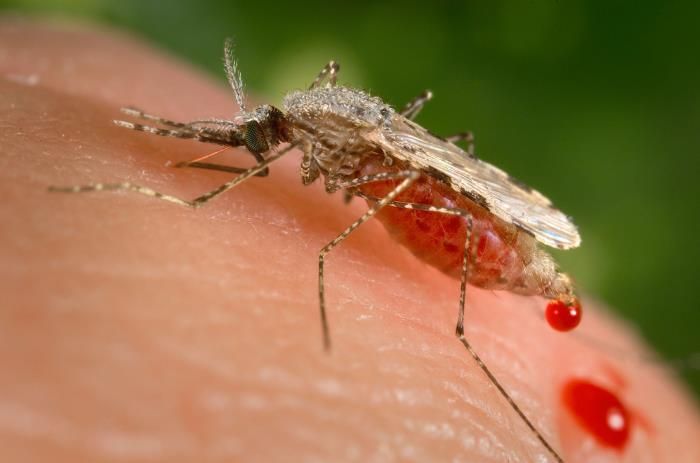This topic takes on average 45 minutes to read.
There are a number of interactive features in this resource:
 Human biology
Human biology
Communicable diseases can be spread, directly or indirectly, from one person to another in many different ways. A pathogen must get inside the body of each new host and the human body has many potential entry points. The eyes, nose, mouth, ears, anus and urino-genital openings are obvious ways in, and microorganisms may also enter the blood directly through broken skin.
Transmission of disease may be directly from person to person, through food or water, through inanimate objects known as fomites or by vectors.
Person to person
There are many different ways in which pathogens can be transmitted directly from one person to another.
| Method of transmission | How it works | Examples |
|---|---|---|
| Direct contact | Pathogens transferred directly from one person to another by skin contact | Skin diseases such as impetigo 
(Photo credit: CDC/Dr J.Miranda) Many sexually transmitted diseases such as gonorrhoea and syphilis |
| Inhalation (droplet infection) | Coughing and sneezing expels millions of droplets from your gas exchange system that contain any pathogens present. Some of the water evaporates, leaving very tiny droplets small enough to remain suspended in the air and full of pathogens. When inhaled by another individual the pathogens get into their respiratory tract and another infection is set up |
Lung diseases such as tuberculosis (bacterial) and influenza (viral) More general infections such as measles (viral) |
| Contaminated body fluids | Blood and other body fluids may contain many pathogens so, if body fluids from an infected person get into another person, disease may be transmitted. Different diseases are passed on in different body fluids.  |
Open wounds (eg HIV/AIDS, tetanus) Contaminated blood donations (eg HIV/AIDS, hepatitis) Breast milk (eg HIV/AIDS) Contaminated medical instruments (eg septicaemia) Shared needles in drug abuse (eg HIV/AIDS, hepatitis) Kissing when saliva is passed from one person to another (eg glandular fever, common cold) |
The infectious diseases that kill the most people every year are simple diarrhoeal diseases. They can be caused by bacteria, viruses, protozoa and worms, often transmitted from one person to another through contaminated food or drink. The contamination may come from pathogens present on the food, or may come from faecal contamination of food or water. In food, many of the pathogens are destroyed when it is cooked thoroughly. The risk of infection is greatest from raw or undercooked food.
In many parts of the world sewage frequently contaminates the water sources and people may have to wash and draw water for drinking from the same place. Water-borne pathogens cause disease, and death of millions every year. Boiling water before drinking it, or adding a small amount of bleach to the water, kills most pathogens. Careful siting of wells and the use of well-positioned pit latrines can greatly reduce the spread of water-borne diseases.
Salmonella spp. infections (bacterial) and hepatitis A (viral) are examples of pathogens transmitted by food and water.

Pit latrines greatly reduce the risk of faecal pathogens reaching the drinking water supply in many parts of the world.
(photo credit: SuSanA Secretariat)
Fomites - inanimate objects such as hospital towels and bedding or somebody else’s makeup – can carry pathogens from one host to another, spreading infection such as Staphylococcus spp. infections.
Both living organisms and environmental factors such as water can act as vectors of human disease, transmitting infection from one person to another. Animal vectors can transmit disease by biting, licking or scratching you. Potential vectors range from mammals to insects. Examples of diseases spread by animal vectors include tetanus (bacterial) hepatitis B, HIV/AIDS, dengue fever and rabies (all viral), malaria and sleeping sickness (protozoa).

Different types of mosquitoes act as vectors for a range of diseases including malaria, dengue or breakbone fever and yellow fever
(photo credit: CDC/James Gathany)

Dogs, foxes, badgers and bats can all carry rabies.